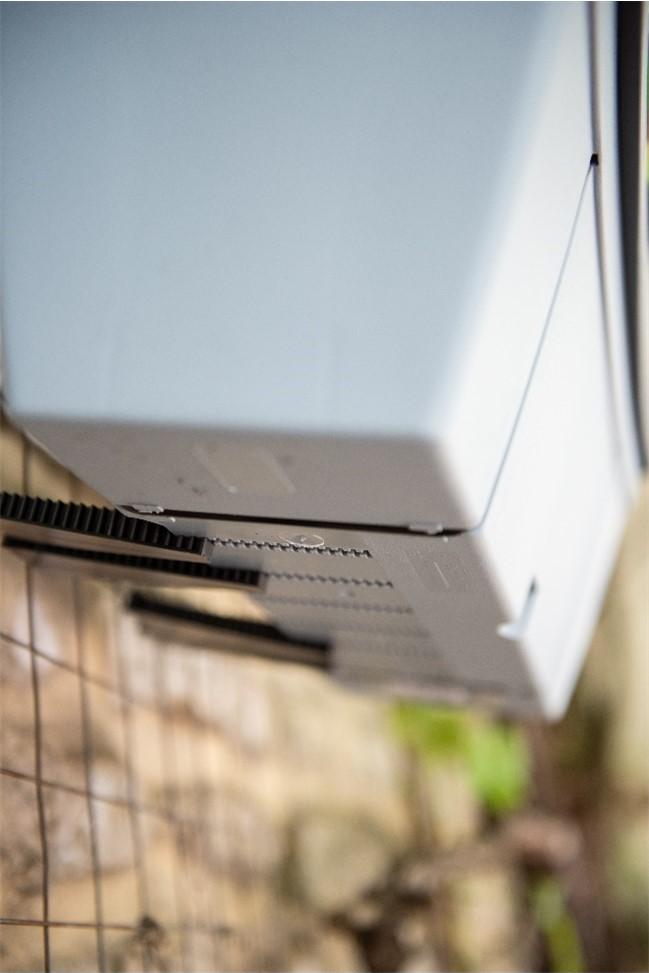You don't have a garden or terrace, but you dream of gardening? No problem! You can transform your balcony to bring nature closer to home and enjoy it with the seasons. A few pretty planters will make all the difference!
There's no need for costly investment to transform your balcony into a dream green space! All you need are a few beautifully arranged pots and flower boxes.
Balcony challenges
In cities, balconies are often small, narrow and long. This makes it difficult to create a convivial space. Space being limited, it's important to play with volumes and heights to make the most of them.
 The type of pots and planters you use for your plants, the way you arrange them and the placement of outdoor furniture will all be decisive factors.
The type of pots and planters you use for your plants, the way you arrange them and the placement of outdoor furniture will all be decisive factors.


A green oasis
Even on a small balcony in the middle of the city, you can, with a minimum of imagination, create a nice little spot of greenery where you can relax after a hard day's work! Fill your planters with fragrant flowers, aromatic herbs or shrubs suited to balcony cultivation. Cultivate an edible garden right next to the kitchen. Freshness guaranteed!
Choose the right balcony planters to create an inspiring setting
The key is to clearly define the purpose of this new space.
- A place to relax, bask in the sun, enjoy an aperitif or have a romantic dinner?
- An urban mini-garden where you can grow your own herbs and vegetables?
- A screen of greenery to isolate you from the urban world around you?
Depending on your desires and objectives, you'll plant and landscape accordingly.

Welcoming colors and scents
In the limited space of a balcony, it's best to avoid multiplying styles and colors, at the risk of creating a cacophony. Think first and foremost of creating a zen-like, harmonious space. Choose three main colors to work with. Choose your planters, accessories and plantings in these hues. If necessary, don't forget to cover the floor of your balcony with wood, artificial grass, outdoor rugs, etc.
Materials for balcony planters
Planters and balcony containers are available in a variety of materials, each with its own advantages and disadvantages: terracotta, wood, plastic (recycled or not), metal, fabric... Difficult to choose? Here are a few pointers to help you.
- Terracotta: attractive but heavy, frost and impact resistant. Breaks easily. Its advantage: the porosity of the material lets the plant breathe.
- Wood: well-suited to custom furnishings. Sturdy, but does not withstand moisture well, especially if the wood is unsuitable. Only certain exotic or exterior-treated woods are suitable (and they are more expensive).
- Metal and zinc: sturdy, shock- and frost-resistant. Modern, even industrial look. It all depends on the style of your home. And it's best to put it in the shade, as it overheats quickly.
- Geotextile: trendy material: ecological, lightweight, frost- and UV-resistant. Easy to store.
- Plastic: this is the most widely used gardening material. And it's the least expensive. Lightweight, impact-resistant, UV-resistant, frost-resistant (if quality). Available in a wide range of sizes, styles and colors. If you prefer recycled material, you'll be more in tune with growing environmental respect.


Types of balcony planters
Floor-standing, straddling a railing or wall-mounted, it all depends on the configuration of your balcony.
- Rider planter for balustrade: very much in vogue in recent years. Ideal for embellishing a balustrade. Easy to attach, compatible with 7 cm balustrades. Fasteners included. Available in many colors.


- Classic planter with mounting bracket: hang from the balustrade on the inside or outside, depending on your taste and the space available.


- Large planters: to be placed on the ground to create a curtain of greenery or divide the space into different zones.


- Wall-mounted planter: an ingenious idea if you're really short of space. Various types of mounting depending on the model.



Size and weight of balcony planters
A basic principle: the larger and deeper the planter, the more the plant can grow, and the less often you'll need to water it.


Think about the weight your different planters will add to your balcony. If you're not sure how much weight you can carry on your balcony, you may want to limit the size and number of planters. In this case, plastic planters are the lightest. Make sure you use a light compost mix and add clay balls to facilitate drainage at the bottom of the planter.
Securing balcony planters
To hang your planters on a balustrade or wall, you'll need brackets.


For added strength and safety, choose plastic-coated or galvanized metal to prevent rusting. Depending on the model, it can accommodate planters of varying sizes.
Make sure that it blocks the planter perfectly in all directions, so that it doesn't topple over in the event of a gust of wind.



Some planters are equipped with water reservoirs. In this case, there's no need for a saucer. Otherwise, it's best to fit a saucer to each planter to catch any excess water.
Don't forget the lighting
To prolong the evening on the balcony, a little light is essential!
There's a vast assortment of mood lighting in all shapes and sizes. From lanterns for table or pedestal tables, to energy-efficient solar lighting and lanterns for hanging or planting in planters... there's something to suit every taste.


Browse the collection